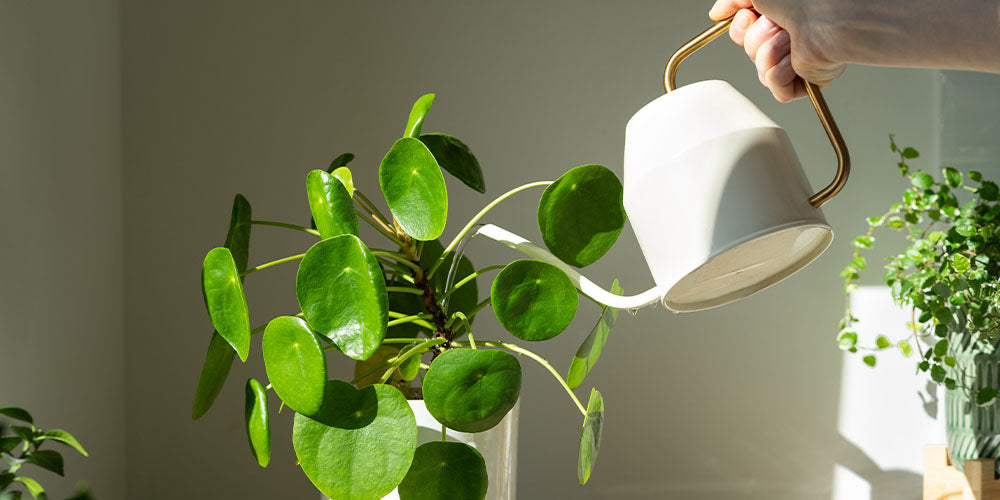Houseplants are a great way to bring a little bit of nature indoors, and they can add an extra touch of color and life to any room.
When it comes to houseplant care, the question of how often to water really depends on what type of plant you choose - from lush ferns and ivy, to low-maintenance cacti and succulents like jade or aloe vera.
There are so many plants out there that it's hard to choose, but lets look at a few of the basic categories and discuss their thirst.
Leafy Houseplants
Leafy houseplants are like mini-ecosystems that we can nurture and watch grow. However, sometimes it can be tricky to know when and how much to water them.
If you have a leafy houseplant with thin and non-fleshy leaves, it's important to remember that these types of plants like balance. They want their soil to be moist but not soggy, and they don't want to dry out either.
One trick is to press your finger into the top of the soil - if it's dry with a slight amount of moisture and a few bits of soil on your finger, it's time to give your plant some water.
But don't stop there!
Experiment with the amount of water to see how much your plant likes or doesn't like. In just a few days, you will be able to see how your plant responds to different amounts of water. All it takes is a few small adjustments to help your leafy houseplant thrive.
Non-Cactus Succulents
Did you know that all cactus are succulents, but not all succulents are cactus?
Non-cactus succulents can be found in different parts around the world. Aloe vera, for example, is a succulent that's native to Africa, while jade plants come from the tropical forests of East Asia.
These types of succulents tend to be low-maintenance and require less frequent watering than other houseplants. In general, you should wait until the soil in your pot is completely dry before adding any water - usually about once a week.
The soil should feel dry, not like powder. It should not be falling away from the sides of the pot either.
Cacti
If you're looking for a very low-maintenance plant, cacti might just be your soulmate.
These resilient plants are used to long periods without water, which is perfect for anyone who may forget to water their plants from time to time.
Most cacti can go without water for much longer than a week, and for fully mature cacti, once a month is sufficient. During the summer, we recommend watering twice a month as more than sufficient hydration.
Of course, it's important to make sure that the soil is completely dry before giving your cactus a good soak. So if you're looking for a plant that can take care of itself for the most part, a cactus may be the perfect addition to your home.
How Much Water is Enough?
Now you're probably asking yourself, how much water do I need to really need to use?
It's a common question among new plant owners so don't worry. We didn't know either.
As a general rule, you should use about ¼ to ⅓ of the pot's volume of water.
For small plants, this usually means about 1 cup of water, for medium plants, it's about 2 cups, and for large plants, it could be as much as 4 cups.
However, keep in mind that not all plants are the same. Some plants simply need more water than others, while some prefer to live in dryer soil. For example, just as we discussed above, cacti and succulents typically like less water, while ferns and tropical plants thrive in moist soil.
So, how much water is enough? It really depends on the plant. But with a little attention and some trial and error, you can find just the right amount to keep your green friends happy and healthy.
Hewma Tips
Watering your houseplants doesn't have to be a guessing game - with the right information and some trial and error, you can find just the right amount for each plant.
Ultimately, it's about finding balance in order to keep them healthy and happy. As Gertrude Jekyll famously said: "A garden is a grand teacher. It teaches patience and careful watchfulness; it teaches industry and thrift; above all it teaches entire trust." So take her advice, pay close attention to your plants' needs, experiment when needed, then sit back enjoy their beauty!
Happy Planting!

